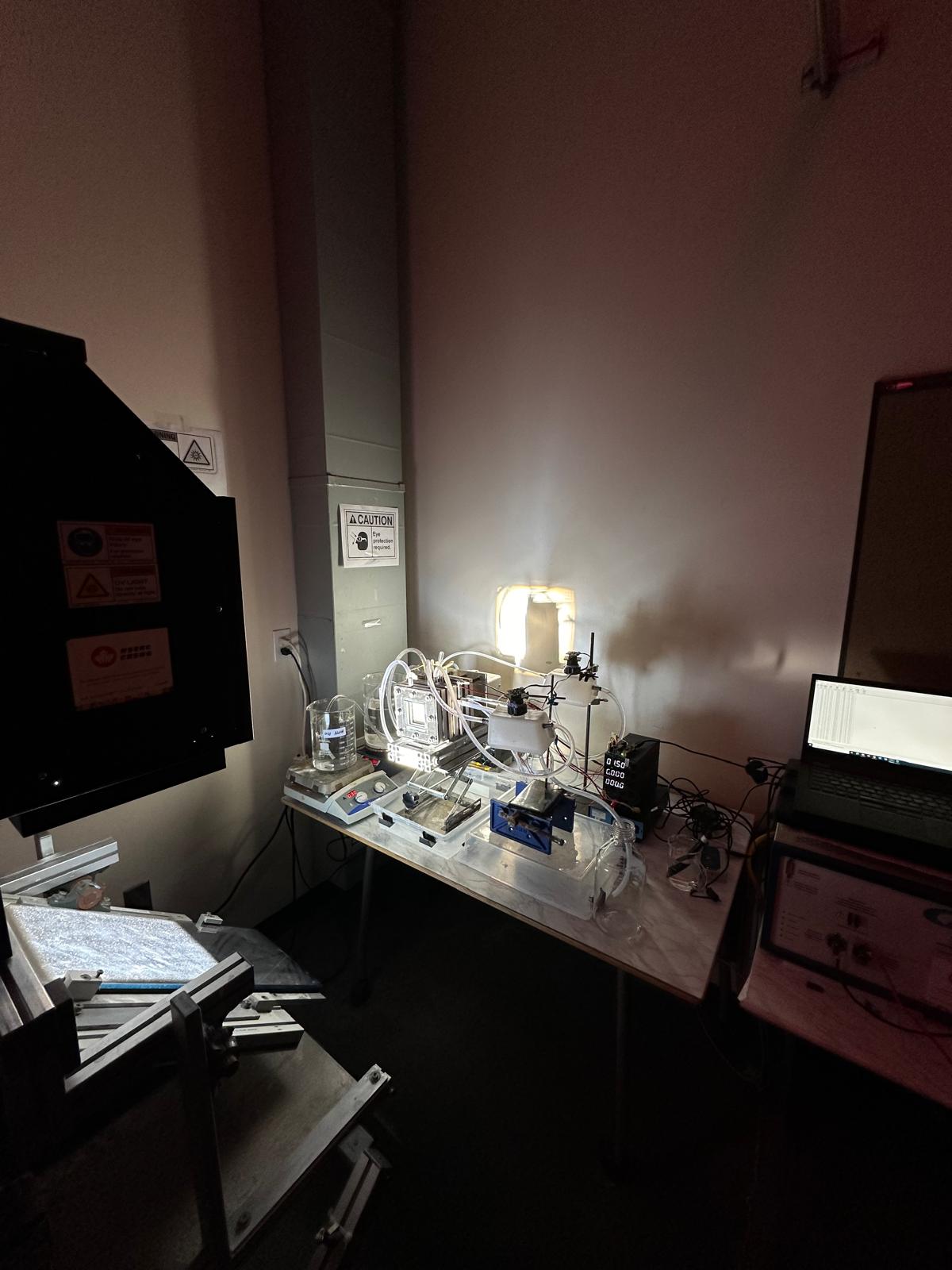Solar Based Hydrogen Production
Photosynthetic Light-Driven Hydrogen Production
This project aims to develop, fabricate and test the engineering equipment needed to scale up a new photosynthetic light-driven process that uses solar energy to split water into hydrogen and oxygen. The process is more efficient and promises lower-cost production of hydrogen than other existing technologies. It uses specially designed molecular complexes in a substrate material for incoming photons to transfer electrons to a central reaction site, which then catalyzes or facilitates a water-splitting process. This project aims to scale up the process to larger capacities of hydrogen production with engineering lab-scale equipment. In addition, it will analyze the system operation and perform thermodynamic optimization studies to improve its performance.


Solar Photochemical Research Facility
Hybrid PEC-Conventional Electrolysis System:
Photoelectrochemical (PEC) water splitting is a promising approach for sustainable hydrogen production, as it directly converts solar energy into chemical energy using semiconductor-based electrodes. The hybrid PEC-Conventional electrolysis system builds on this concept by integrating PEC and conventional electrolysis, combining their advantages to enhance efficiency and reliability.
This system enables continuous hydrogen generation, even in the absence of sunlight, ensuring a stable hydrogen supply. The process begins with a photocathode that absorbs solar energy, generating electrons and holes. These charge carriers drive the electrolysis process, reducing the external power demand. A key feature of this system is the integration of two separate electrolysis cells, connected via a common (bipolar) anode electrode. This configuration not only boosts hydrogen production but also reduces total power consumption by leveraging solar-assisted electrolysis. By integrating solar energy with standard electrolysis techniques, this hybrid system represents a technological advancement in hydrogen production. It provides a sustainable, cost-effective, and energy-efficient solution compared to traditional electrolysis methods while supporting the transition toward renewable energy-based hydrogen generation.
